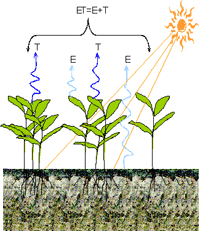Agricultural Research Division of IANR

West Central Research and Extension Center, North Platte
Date of this Version
2016
Citation
Great Plains Research 26 (Fall 2016):93-106.
Abstract
Invasive and native plant species compete for resources in similar pools, with disturbances often favoring the invader. Yet, increased climate variability may be shifting the competitive edge back toward the natives. We conducted field studies in perennial grasslands to determine the effects of clipping and drought on resource availability (light and moisture) and subsequent establishment of Carduus nutans. We measured light penetration and soil moisture content in C. nutans monoculture, clipped and non clipped grassland with C. nutans, and bare ground control plots. We also tracked phenology of the invader and grasses. Our studies revealed that light was a limiting resource in normal precipitation years; removing biomass (e.g., clipped grassland plots) allowed C. nutans to successfully establish, while not removing biomass (e.g., nonclipped grassland plots) resulted in premature death. Similarly, soil moisture was a limiting resource when light was abundant; a lack of precipitation in the second year reduced grass growth, which opened the canopy and allowed adequate light for C. nutans seedlings that also died prematurely under extremely low soil moisture levels. We found that C. nutans was unable to compensate for the low light and soil moisture in offsetting, yet consecutive seasons and failed to establish in a nonclipped grassland. The emergence of C. nutans in a temperate perennial grassland is not a sure sign of success. Ifleft undisturbed, C. nutans seedlings may eventually die without having a significant impact on grasses.


Comments
Copyright © 2016 by the Center for Great Plains Studies, University of Nebraska-Lincoln